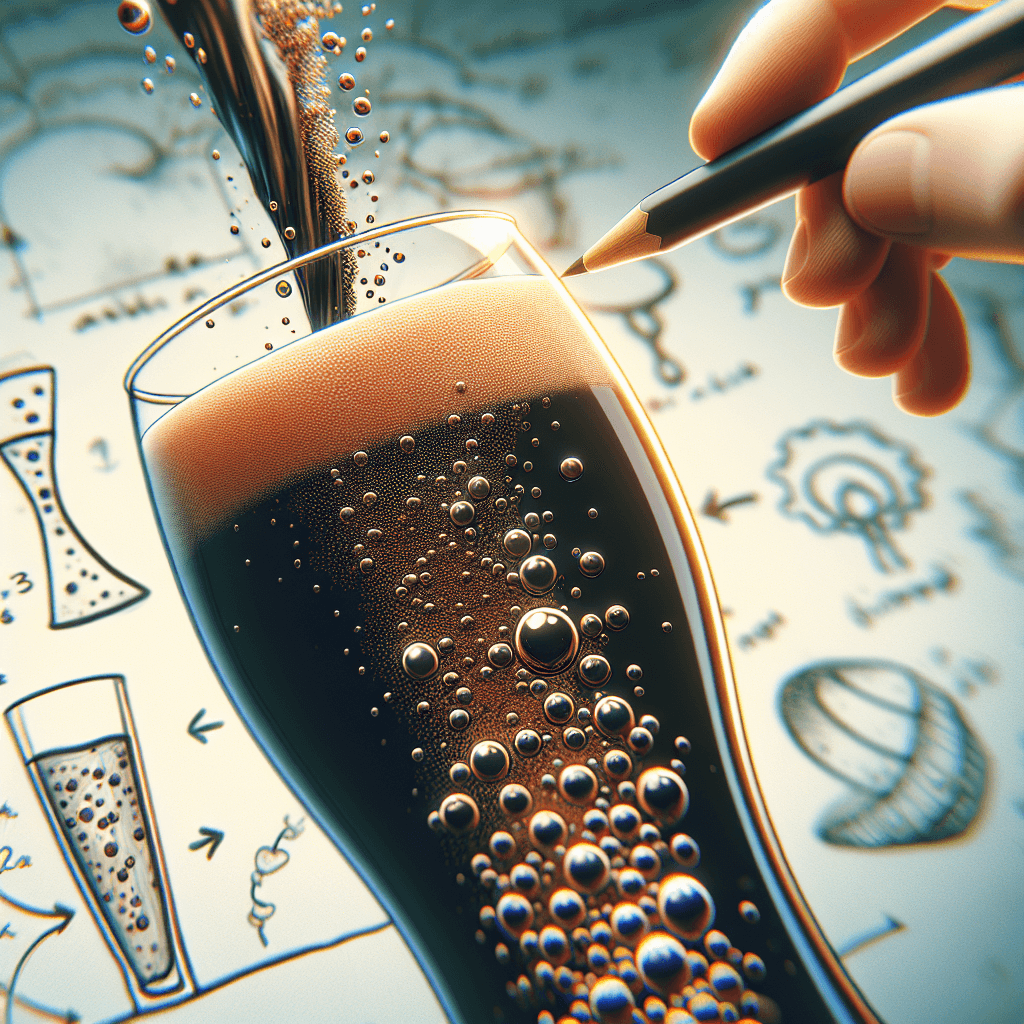Why do the bubbles in a glass of Guinness appear to sink instead of rise
It’s not an optical illusion—the iconic cascade in a pint of Guinness genuinely flows downwards. Discover the fascinating fluid dynamics that make these bubbles appear to defy the laws of physics.


Too Long; Didn't Read
TLDR: It's an illusion. The shape of the glass causes a circulation current where beer rises in the middle and flows down the sides, dragging the tiny nitrogen bubbles with it and making them appear to sink.
The Guinness Cascade: Why Do the Bubbles in a Glass of Guinness Appear to Sink Instead of Rise?
Have you ever watched a freshly poured pint of Guinness and noticed something that seems to defy the laws of physics? While bubbles in most beers rush eagerly to the top, the creamy bubbles in a glass of Guinness perform a mesmerizing, cascading dance, appearing to sink along the sides of the glass. This isn't a trick of the light or a figment of your imagination; it's a real phenomenon rooted in fascinating science. This strange and beautiful effect has puzzled pub-goers for generations, but the answer lies in a unique combination of gas, glassware, and fluid dynamics. This post will break down the science behind why the bubbles in a Guinness appear to fall, proving that your pint is a mini-laboratory of complex physics.
The Secret Ingredient: It's Not Just Air
The first clue to solving this mystery lies in the gas used to carbonate the beer. Most lagers, ales, and sodas are carbonated with carbon dioxide (CO2). CO2 bubbles are relatively large and highly buoyant, which is why they shoot straight to the top of a glass.
Guinness, however, is different. It uses a gas mix that is approximately 75% nitrogen and 25% carbon dioxide. Nitrogen gas is largely insoluble in liquid, which means it creates significantly smaller and more numerous bubbles than CO2. These tiny nitrogen bubbles are less buoyant and more susceptible to the currents within the beer itself. This specific gas mix is also responsible for the stout's famously thick, creamy head.
The Glassware and the 'Drag' Effect
The second piece of the puzzle is the iconic, tulip-shaped Guinness pint glass. Its distinctive shape, with sides that slope outwards from the base before narrowing slightly at the top, is not just for aesthetics—it's crucial for creating the cascade.
When the Guinness is poured, the bubbles begin to rise. However, they experience friction, or "drag," from the walls of the glass. The bubbles in the center of the glass are furthest from the walls and experience the least amount of drag, so they rise more quickly. As these central bubbles rise, they drag the surrounding liquid beer up with them, creating a powerful upward current in the middle of the glass.
Putting It All Together: The Fluid Dynamics of the Cascade
This is where the magic happens. The beer that's been pulled upwards in the center has to go somewhere. When it reaches the top, it is deflected outwards and begins to flow back down along the wider sides of the glass. This creates a continuous circulation pattern within the pint.
The downward current of beer along the sides of the glass is actually stronger than the upward buoyant force of the tiny nitrogen bubbles. As a result, any bubbles caught in this downward flow are dragged along with it, creating the visible sinking effect.
So, what you are witnessing is not bubbles defying gravity, but a beautiful example of fluid circulation:
- Bubbles rise faster in the center of the glass where there is less friction.
- This creates an upward current of beer in the middle.
- The beer circulates, creating a downward current along the sides of the glass.
- This downward flow is strong enough to pull the tiny nitrogen bubbles down with it.
Essentially, while some bubbles are indeed rising in the center of the pint (though it's harder to see), the ones you notice are the bubbles near the glass being carried downwards by the beer itself. Researchers at institutions like the University of Limerick have even used complex computer simulations to model this exact process, confirming that the glass shape is the critical factor in initiating this unique flow.
Conclusion
The sinking bubbles in a glass of Guinness are not an illusion but a perfect storm of scientific principles. It’s the result of using less-buoyant nitrogen gas, which creates fine bubbles, combined with the specific shape of the tulip glass that promotes a powerful circulation of liquid. This downward current of beer along the sides simply overpowers the bubbles' natural tendency to rise, pulling them down in the beautiful, flowing cascade that Guinness is famous for. So, the next time you order a pint of the black stuff, take a moment to appreciate the show. You’re not just waiting for your beer to settle—you're watching a brilliant display of physics in action.


